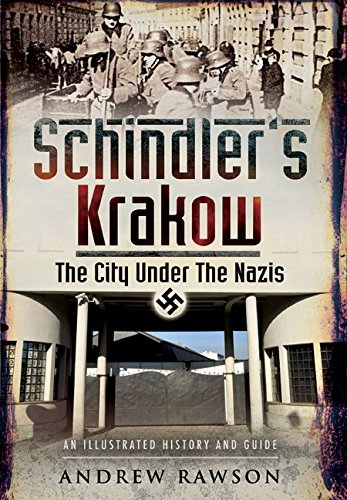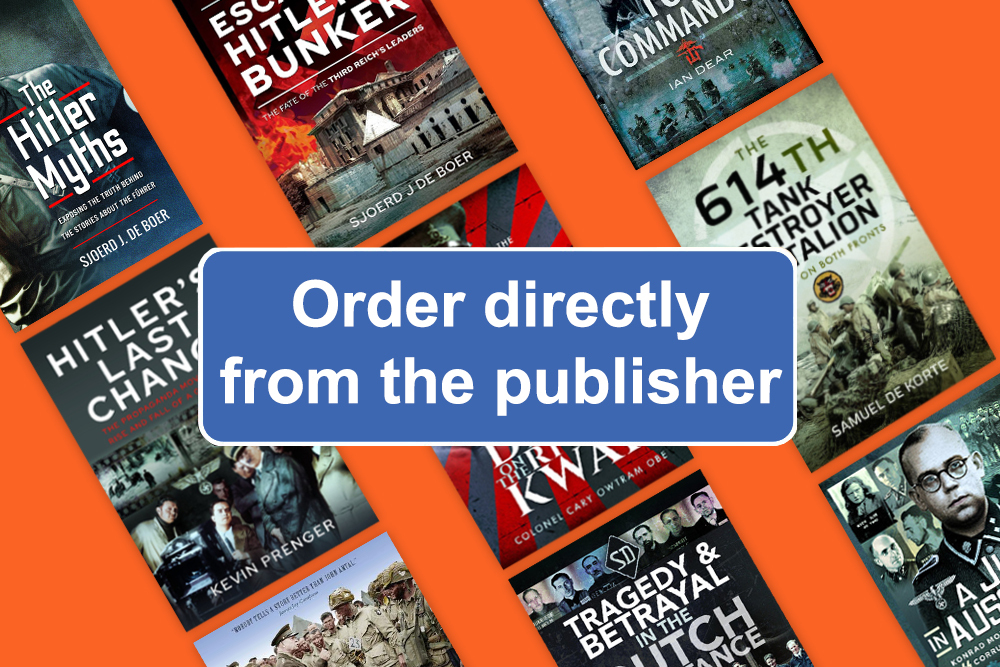| Title: | Schindler’s Krakow - The City Under The Nazi’s |
| Writer: | Rawson, A. |
| Published: | Pen & Sword |
| Published in: | 2015 |
| Pages: | 145 |
| ISBN: | 9781473827974 |
| Description: | As the Red Army dealt with the last German resistance in the Polish city of Krakow, on January 18, 1945, the Polish national flag was flying again on a tower of Wawel Castle. The former royal residence had been the seat of the Nazi officer Hans Frank, the governor of the Generalgouvernement. For the past five years Krakow was the capital of this part of Poland that suffered heavily during the Second World War by German occupation. In Schindler's Krakow: The City Under The Nazis by the British publisher Pen & Sword, freelance writer Andrew Rawson talks about the history of the city from the German invasion in September 1939 to its reconquest in January 1945 by the Red Army and the Polish underground. The title naturally refers to the best-known representative of the German occupier in Krakow, the industrialist Oskar Schindler, who became legendary through Steven Spielberg's feature film Schindler’s List (1993). As a factory owner, he stood up for his Jewish workers and saved the lives of more than 1,000 of them. The Jewish inhabitants of Krakow who could not count on his protection had little chance of survival. Few of the more than 68,000 Jews who lived in the city in 1939 would survive. The demise of almost the entire Jewish community of Krakow plays an important role in the book. Rawson describes which steps preceded the final extermination of the Krakow Jews. As in other cities in Poland, the establishment of a ghetto played a crucial role in this. The ghetto was located in Krakow in the Podgórze district on the south bank of the Vistula River. In an area of 500 by 400 metres, 15,000 Jews lived in dwellings where once 3,000 Poles had lived. Several families often shared an apartment, which in many cases was not connected to the water supply and sewerage systems. Overcrowding and primitive living conditions caused a lot of misery. The suffering was exacerbated when the ghetto was closed down in 1942; the Jews who were not deported to the Belzec extermination camp ended up in Camp Plaszow, where the murderous camp commander Amon Göth was in charge. The remains of some 10,000 murdered prisoners – both Jews and non-Jewish Poles - are still buried in the area around the former camp. In addition to the persecution of the Jews, the book also addresses the Nazi administration and the Polish resistance in the city. As in other Polish cities under German occupation, large and small measures were taken to remind the indigenous population of their subordinate role towards the new rulers. By removing statues of their historical heroes, their national past was erased. Names of squares and streets were Germanized; for example, the Krakow market square became known as Adolf Hitler Platz. Newspaper offices were closed, members of the intelligentsia were liquidated or imprisoned in camps, and access to theatres was reserved for Aryans. In addition, many Krakow residents were summoned for forced labour. Resistance to Nazi terror continued until the end of the occupation. There was even talk of an underground police force of 2,000 men who solved murders and robberies that the official police force could not manage due to a lack of manpower. The German occupation of Krakow illustrates how the Nazis subjugated Polish cities to their ruthless authority. In language that is concise and clear though somewhat monotonous, Andrew Rawson describes how this process took place. His story, supported by photographs, is complete and fits in with current historical research. Unfortunately, he doesn’t provide his source. This compact book is especially useful as an information guide for those interested in World War II who want to search for traces of the German occupation in Krakow. The final chapter in particular is valuable to them. It deals with several relevant sights such as Schindler's factory, the Gestapo museum and Wawel Castle. Anyone who combines a trip to Krakow with a visit to the Auschwitz concentration and extermination camp about 70 kilometres west is recommended by the writer to also purchase his book Auschwitz: the Nazi Solution from the same publishing house. |
| Beoordeling: |    Good Good |
Information
- Translated by:
- Fernando Lynch
- Article by:
- Kevin Prenger
- Published on:
- 17-08-2019
- Feedback?
- Send it!




